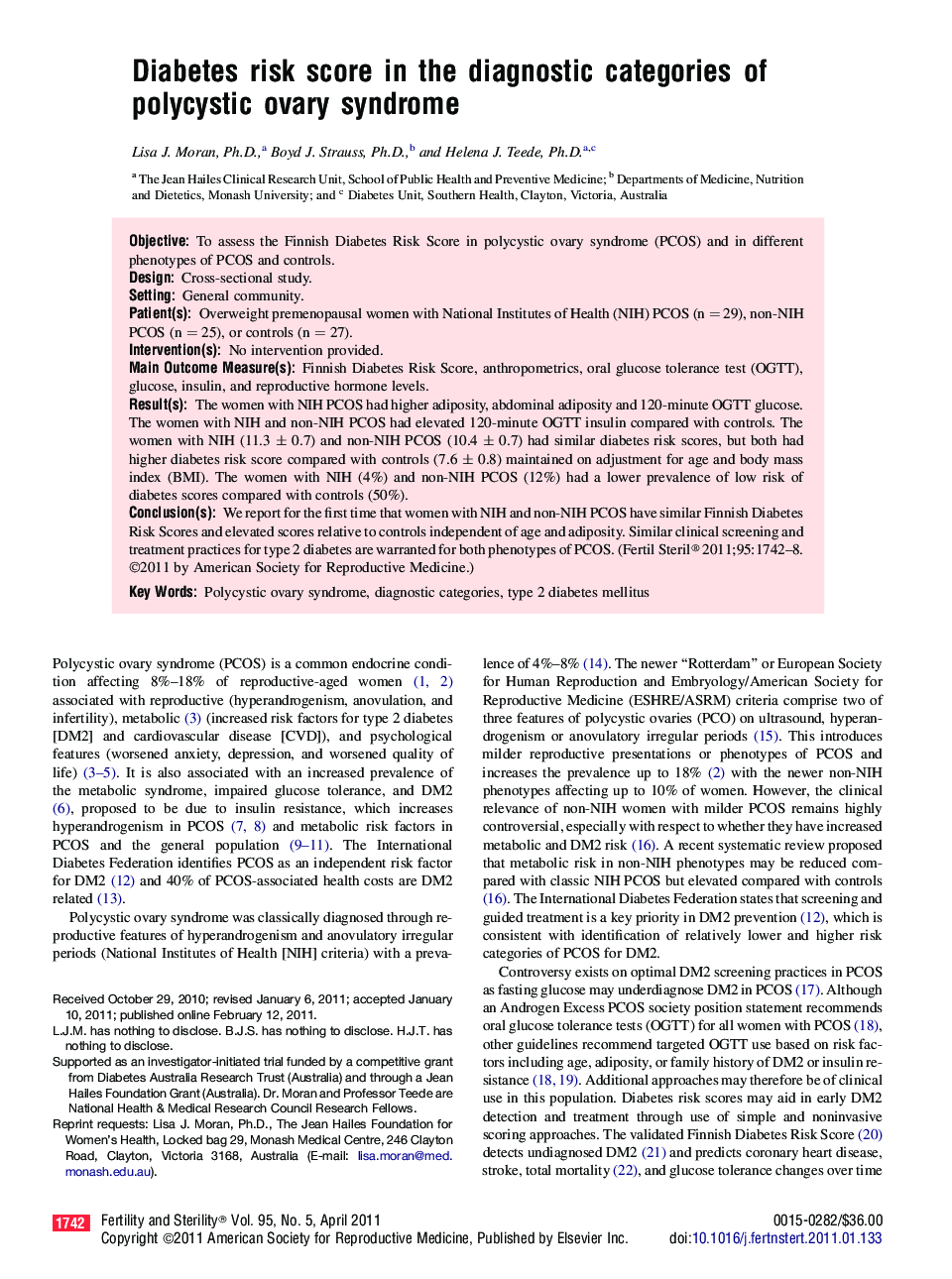| Article ID | Journal | Published Year | Pages | File Type |
|---|---|---|---|---|
| 3937953 | Fertility and Sterility | 2011 | 7 Pages |
ObjectiveTo assess the Finnish Diabetes Risk Score in polycystic ovary syndrome (PCOS) and in different phenotypes of PCOS and controls.DesignCross-sectional study.SettingGeneral community.Patient(s)Overweight premenopausal women with National Institutes of Health (NIH) PCOS (n = 29), non-NIH PCOS (n = 25), or controls (n = 27).Intervention(s)No intervention provided.Main Outcome Measure(s)Finnish Diabetes Risk Score, anthropometrics, oral glucose tolerance test (OGTT), glucose, insulin, and reproductive hormone levels.Result(s)The women with NIH PCOS had higher adiposity, abdominal adiposity and 120-minute OGTT glucose. The women with NIH and non-NIH PCOS had elevated 120-minute OGTT insulin compared with controls. The women with NIH (11.3 ± 0.7) and non-NIH PCOS (10.4 ± 0.7) had similar diabetes risk scores, but both had higher diabetes risk score compared with controls (7.6 ± 0.8) maintained on adjustment for age and body mass index (BMI). The women with NIH (4%) and non-NIH PCOS (12%) had a lower prevalence of low risk of diabetes scores compared with controls (50%).Conclusion(s)We report for the first time that women with NIH and non-NIH PCOS have similar Finnish Diabetes Risk Scores and elevated scores relative to controls independent of age and adiposity. Similar clinical screening and treatment practices for type 2 diabetes are warranted for both phenotypes of PCOS.
